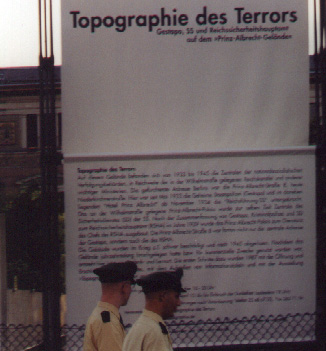
Geopolitics in a Changing World 
by Klaus Dodds
Dates | Contrasting ways of envisioning the world | Humanitarianism | Women
1 Contemporary geopolitics:
"In a world where there is much to know, there are many ways of knowing." ( p. 30.)
2 globalization of world politics
3 Global apartheid and north-south relations
6 Globalization of environmental issues
7 Globalization of humanitarianism
Dates | Contrasting ways of envisioning the world | Humanitarianism | Women
Background
"The world's regions have become ever more interconnected."
p. 26.
 In contrast, (critical geopolitics) critical approaches to world politics would suggest that unless one challenges or questions contemporary structures and power relations, then academic approaches run the risk of merely legitimating existing practices.
In contrast, (critical geopolitics) critical approaches to world politics would suggest that unless one challenges or questions contemporary structures and power relations, then academic approaches run the risk of merely legitimating existing practices.
The theories on world politics are not detached from the world we seek to describe and explain and in acknowledging this point, critical theorists may then contribute to the development of practical ideas about how progressive social and political change may be promoted."
pp. 33-34.
"geography is a form of power-knowledge itself."
Edward Said's work on Western representations of the Middle East provides one of the clearer examples of how Foucault's insights on discourse and genealogies of power-knowledge are are suited to research. Said's famous book Orientalism charts the creation and evolution of a series of imaginary geographies which construct the Middle East within Western geographical imaginations.
Said "argues that the Middle East's complex place and cultural characteristics were reduced to a few defining features such as the 'threat' posed to the Euro-American culture by Arabs and the the Muslim faith (Said, 1978). The book's concern for the 'distribution of geopolitical awareness into aesthetic, scholarly, economic, sociological, historical, and philosophical texts, has been extremely thought provoking."
p. 34.
"The use of symbolism, metaphors, and tropes can be crucial to the shaping of political understandings of specific instances."
p. 35.
Dates | Contrasting ways of envisioning the world | Humanitarianism | Women | Civil Rights
III p. 53 “Changing divisions of wealth between North and South”
IV p. 71. “Most people in Europe, the US and Japan learn about foreign affairs through the media, whether it be through radio, television , or the internet."
"Representing Global political space."
p. 72.
This requires reconciling three facets of geopolitical knowledge sources:
Council on Hemispheric Affairs or COHA, is a Latin American Relations "think tank.”
V p.92. “The threat posed by nuclear weapons is enormous as even isolated experimental nuclear explosions have potential to destroy parts of the Earth’s ecosystems.”
“the creation of a nuclear culture that dehumanized opponents, exaggerated threats to national security, and downplayed the consequences for human and environmental life.”
“the unequal geographies of nuclear threats and testing/testers.”
“raise fundamental moral issues” as opposed to stabilizing world‘s regions, p. 106

VI p. 108. “If the oil wars have begun, the water wars may nor be far behind, and then conflict stemming from soil loss, forest loss and high global temperatures and sea level rising will follow.”… King Hussain of Jordan.
VII p. 126. UN declaration on HR, 1948, “the growing international profile of human rights and the increasing demands of humanitarian assistance…” p. 127.
VIII p. 149. Concluding remarks, “the ability to make geographical and political connections between an often bewildering series of stories and events.” i.e. the Sudan, the IMF and debt and the starvation of Sudanese and eventual decline into civil war.
Dates | Contrasting ways of envisioning the world | Humanitarianism | Women | Civil Rights
Views of how the world operates
There may be only one world but there are several ways to see it and more ways to exploit it that must be meshed to understand the brink of opportunity and disaster on which we all balance.
Realist view (reale politique) power politics, blocs and wealth driven interests
Liberal (Westphalian model) “marketplace of ideas" and autonomy view
North/south apartheid view (rich white industrialized vs. poor black/yellow agrarian)
Corporate international view (globalization) TNC and MNC knitting a common world
New World Order, (five to seven civilizations will clash against one another for global domination) Huntington: Islam and Christianity are just two of these examples; others include Chinese, Hindu, Russian (Orthodox), Buddhist, and African.
pp. 11-35.
Dates | Contrasting ways of envisioning the world | Humanitarianism | Women | Civil Rights
Contrasts and comparisons
3 ways of seeing the world are fairly recent, empirical and objectifying, not organic
| approach | realism | liberalism | critical geopolitics |
|---|---|---|---|
authority |
•national sovereignty | •national sovereignty | • interdependence |
legitimacy |
• states | • states & NGOs,TNC | • globalization |
control |
• military power | • regionalism | • networks and nodal points |
status quo |
•anarchical world | • limited cooperation | • representations of global space |
coercion |
threat of force | IMF, World Bank | humanitarian aid |
doctrines |
nuclear deterrence | disarmament treaties | guest worker agreements |
| preemptive wars | defensive, just war | multilateral ventures |
p. 34
National sovereignty currently means a belief in nation-states such as France and the United Kingdom, Italy or Germany, as opposed to Austro-Hungarian, Ottoman, or multi-national empires that had existed since the 1700s when Russia, Great Britain, the Spanish Hapsburgs or Ottoman Turks had persisted as multinational imperial powers.
Environmental problems emerged as international subjects of negotiation with migratory birds in 1900 and U.S. - Canadian boundary concerns for the Great Lakes and the Columbia River basin. There was also a concern in Europe before the 1900s about navigation on the Rhine River. European nations have always had fishery agreements and a ban on international whaling after the Second World War.
In the 1950s there was a serious international movement to stop the atmospheric testing of nuclear weapons due to fallout contaminating fields and cows thousands of miles from the explosion of the atomic bombs in the South Pacific.
But modern environmental matters are often dated by historians to the Stockholm 1972 meeting of the United Nations to discuss the state of the world's population growth, consumption, and pollution.
Environmental problems that cross borders include population control (birth control, family planning and medical care for women and children), waste disposal, energy use, deforestation and desertification, but these issues often compete with arms control, trade agreements and foreign aid --if not war and defense expenditures-- for public attention.
Dates | Contrasting ways of envisioning the world | Humanitarianism | Women | Civil Rights
 At the Berlin Wall
At the Berlin Wall
Growing importance of refugees, displaced minorities and political prisoners have made the need for humanitarian aid & human rights ever more essential in the decline of certain nations in specified regions.
“The geographical and legal implementation of human rights should provide and excellent case study for geopolitics and global politics (policies).
p. 126
instead an example of failure to act
“Unfortunately, the international community’s willingness to protect rights over the last fifty years has been patchy, as the current human rights trials seem to attest.”
“the geography of human rights protection has tended to favor the wealthier northern states and their citizens rather than the poorer…”
p. 126
Are civil rights the same as human rights?
Examples of human rights failures
Date | Contrasting ways of envisioning the world | Humanitarianism | Women | Civil Right
“Human rights have long occupied a place in Western political thought, from: Thomas Aquinas, Thomas Beckett, & Thomas More until now.
Post-colonial rift
Civil, political, economic rights vs. cultural & religious expression, right to tribal survival.
Human rights are a broader definition of protection afforded people of every nation than are civil rights which may vary from nation to nation. Human rights are described in the United Nations Declaration on Human Rights, first enunciated in 1945 and influenced by U.S. First Lady, Eleanor Roosevelt.
Dates | Contrasting ways of envisioning the world | Humanitarianism | Women | Civil Rights
Women
Rights to protection of property and family security in the home, health and education.
Most of the violence occurs in domestic situation.
1996, 1% of the world’s property, land and financial resources was held by women.
p. 129
The key to future global stability is the elevation of the status of women. That improvement of status would allow women to become educated. Such education is necessary for women to recognize that they are able to control their lives, regulate their fertility and earn an income for themselves and their families outside of the confines of a traditional home.Tropes, [Greek, to turn]
• a figurative or metaphorical use of a word or expression : he used the two-Americas trope to explain how a nation free and democratic at home could act wantonly abroad.
• a conventional idea or phrase: "All people are created equal and endowed by their creator with certain inalienable rights..."
![]() "the arsenal of democracy" Characteristic trope applied to the US in the 1940s.
"the arsenal of democracy" Characteristic trope applied to the US in the 1940s.
Dates | Contrasting ways of envisioning the world | Humanitarianism | Women | Civil Rights